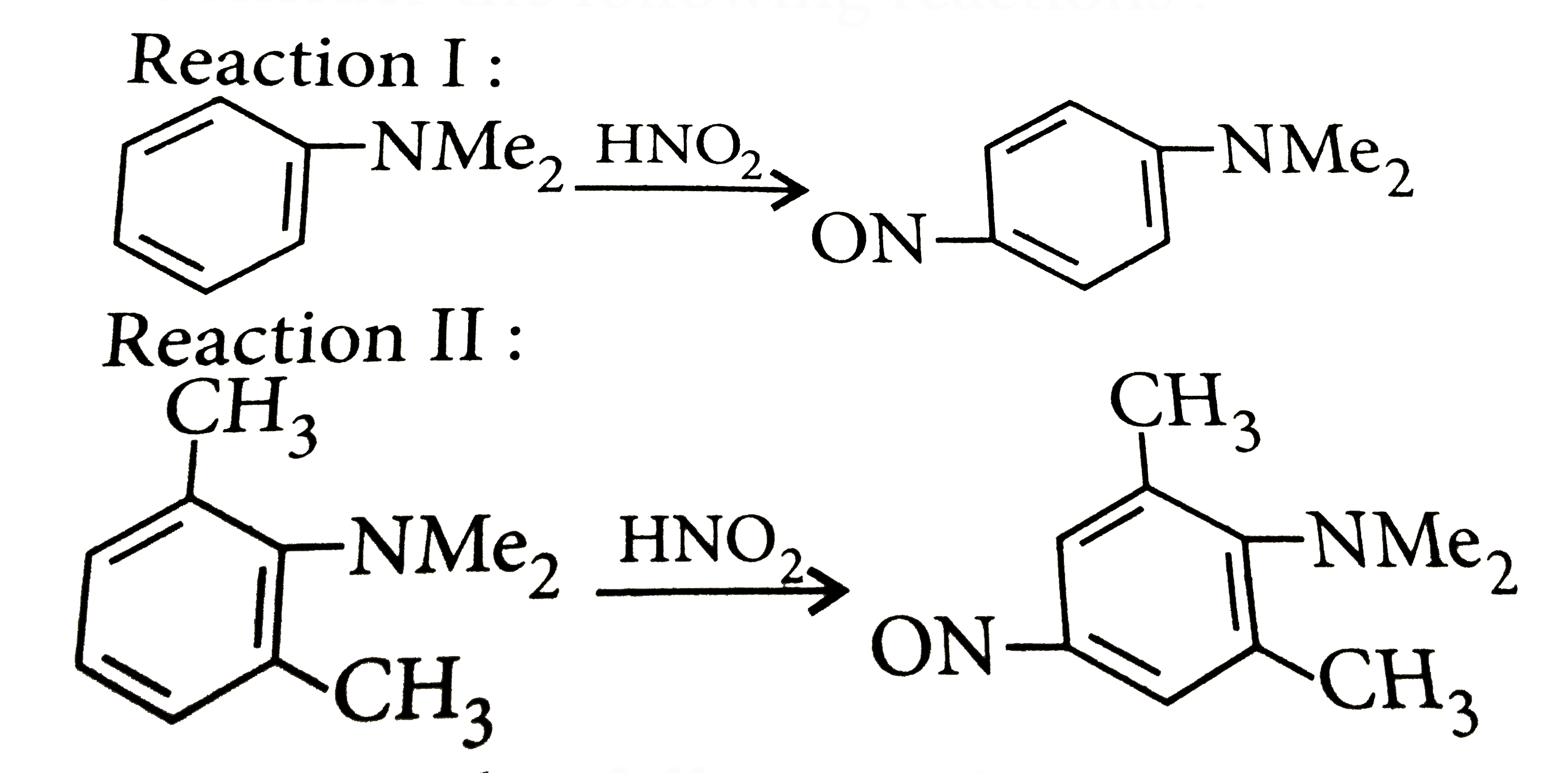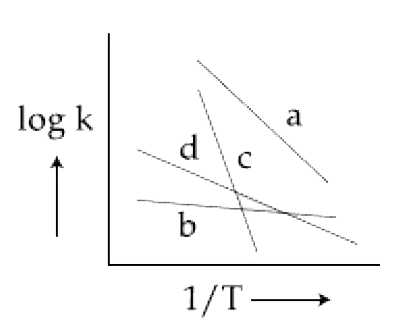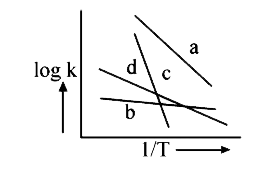Which of the following order is/are correct for the rate of E2 reaction ?
5-Bromocycloheptene > 4-Bromocycloheptene
2-Bromo-1-phenylbutane > 3-Bromo-1-phenylbutane
3-Bromocyclohexene > Bromocyclohexane
3-Bromo-2-methylpentane > 2-Bromo-4-methylpentane
The correct Answer is:B, C, D
To determine the correct order for the rate of E2 reactions among the given compounds, we need to analyze the stability of the transition states formed during the E2 elimination process. The stability of the transition state is influenced by the degree of substitution of the resulting alkene. More substituted alkenes are generally more stable, leading to a faster reaction rate.
1. Understanding E2 Mechanism:
- E2 (bimolecular elimination) involves the simultaneous removal of a leaving group (like bromine) and a proton from the β-carbon, forming a double bond.
- The transition state resembles the product alkene, and its stability is crucial for the reaction rate.
2. Analyzing the Given Compounds:
- 5-bromo cycloheptane vs. 4-bromo cyclohexane:
- 5-bromo cycloheptane leads to a non-conjugated alkene, while 4-bromo cyclohexane can lead to a conjugated alkene.
- Conjugated alkenes are more stable, so 4-bromo cyclohexane will react faster than 5-bromo cycloheptane.
3. Comparing 2-bromo-1-phenylbutane and 3-bromo-1-phenylbutane:
- 2-bromo-1-phenylbutane forms a conjugated alkene upon elimination, while 3-bromo-1-phenylbutane does not.
- Thus, the rate of E2 reaction for 2-bromo-1-phenylbutane is greater than for 3-bromo-1-phenylbutane.
4. Comparing 3-bromo-1-phenylbutane and 3-bromo-cyclohexane:
- 3-bromo-1-phenylbutane leads to a less stable alkene compared to 3-bromo-cyclohexane, which can form a conjugated product.
- Therefore, 3-bromo-cyclohexane reacts faster than 3-bromo-1-phenylbutane.
5. Comparing 3-bromo-2-methylpentane and 2-bromo-4-methylpentane:
- 3-bromo-2-methylpentane can form a more substituted alkene compared to 2-bromo-4-methylpentane.
- Hence, the rate of E2 reaction for 3-bromo-2-methylpentane is greater than for 2-bromo-4-methylpentane.
6. Final Order of Rates:
- From the analysis, we conclude that the correct order for the rate of E2 reactions is:
- 4-bromo cyclohexane > 2-bromo-1-phenylbutane > 3-bromo-cyclohexane > 3-bromo-1-phenylbutane > 3-bromo-2-methylpentane > 2-bromo-4-methylpentane.
Conclusion:
The correct orders for the rate of E2 reactions are:
- 2-bromo-1-phenylbutane > 3-bromo-1-phenylbutane
- 3-bromo-cyclohexane > 3-bromo-1-phenylbutane
- 3-bromo-2-methylpentane > 2-bromo-4-methylpentane
- E2 (bimolecular elimination) involves the simultaneous removal of a leaving group (like bromine) and a proton from the β-carbon, forming a double bond.
- The transition state resembles the product alkene, and its stability is crucial for the reaction rate.
- 5-bromo cycloheptane vs. 4-bromo cyclohexane:
- 5-bromo cycloheptane leads to a non-conjugated alkene, while 4-bromo cyclohexane can lead to a conjugated alkene.
- Conjugated alkenes are more stable, so 4-bromo cyclohexane will react faster than 5-bromo cycloheptane.
- 2-bromo-1-phenylbutane forms a conjugated alkene upon elimination, while 3-bromo-1-phenylbutane does not.
- Thus, the rate of E2 reaction for 2-bromo-1-phenylbutane is greater than for 3-bromo-1-phenylbutane.
- 3-bromo-1-phenylbutane leads to a less stable alkene compared to 3-bromo-cyclohexane, which can form a conjugated product.
- Therefore, 3-bromo-cyclohexane reacts faster than 3-bromo-1-phenylbutane.
- 3-bromo-2-methylpentane can form a more substituted alkene compared to 2-bromo-4-methylpentane.
- Hence, the rate of E2 reaction for 3-bromo-2-methylpentane is greater than for 2-bromo-4-methylpentane.
- From the analysis, we conclude that the correct order for the rate of E2 reactions is:
- 4-bromo cyclohexane > 2-bromo-1-phenylbutane > 3-bromo-cyclohexane > 3-bromo-1-phenylbutane > 3-bromo-2-methylpentane > 2-bromo-4-methylpentane.
The correct orders for the rate of E2 reactions are:
- 2-bromo-1-phenylbutane > 3-bromo-1-phenylbutane
- 3-bromo-cyclohexane > 3-bromo-1-phenylbutane
- 3-bromo-2-methylpentane > 2-bromo-4-methylpentane
Topper's Solved these Questions
- BOOK - RESONANCE ENGLISHCHAPTER - ORGANIC REACTION MECHANISMS-IVEXERCISE - Exercise-2 Part-48videos
ORGANIC REACTION MECHANISMS-IV
- BOOK - RESONANCE ENGLISHCHAPTER - ORGANIC REACTION MECHANISMS-IVEXERCISE - Exercise-3 Part-118videos
ORGANIC REACTION MECHANISMS-IV
- BOOK - RESONANCE ENGLISHCHAPTER - ORGANIC REACTION MECHANISMS-IVEXERCISE - Exercise-2 Part-27videos
ORGANIC REACTION MECHANISMS-IV
- BOOK - RESONANCE ENGLISHCHAPTER - ORGANIC REACTION MECHANISMS - IIEXERCISE - APSP Part - 322videos
ORGANIC REACTION MECHANISMS - II
- BOOK - RESONANCE ENGLISHCHAPTER - PERIODIC TABLE & PERIODICITYEXERCISE - ORGANIC CHEMISTRY(BASIC CONCEPTS)27videos
PERIODIC TABLE & PERIODICITY
Similar Questions
Which of the following is/are correct for the first order reaction?
 View Solution
View SolutionWhich of the following order is CORRECT
View SolutionConsider the following reactions :

Which of the following is a correct comparison of rate of reaction ?View SolutionWhich of the following is/are correct about the first order reaction ?
View SolutionConsider the following plots of rate constant versus 1T for four different reactions. Which of the following orders is correct for the activation energies of these reactions ?
 View Solution
View SolutionConsider the following plots of rate constant versus 1T for four different reactions. Which of the following orders is correct for the activation energies of these reactions?
 View Solution
View SolutionWhich of the following is (are) not correct for a first order reaction?
View SolutionWhich of the following graph is correct for a first order reaction ?
View SolutionWhich of the following order of L.E. is not correct :-
View SolutionWhich of the following statement is not correct about order of a reaction ?
View Solution

